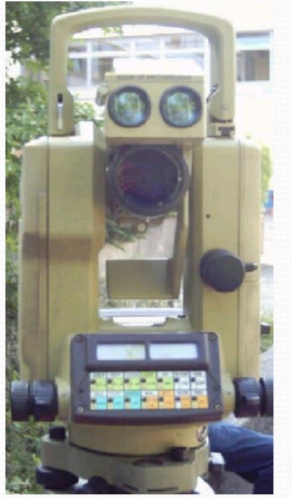DESCRIPTION OF A TRANSIT VERNIER THEODOLITE
A Transit vernier theodolite essentially consist of the following :
1. Levelling Head.
2. Lower Circular Plate.
3. Upper Plate.
4. Telescope.
5. Vernier Scale.
6. T- Frame.
7. Plumb –bob.
TERMS USED IN MANIPULATING A TRANSIT VERNIER THEODOLITE.
1. Centering :
Centering means setting the theodolite exactly over an instrument- station so that its vertical axis lies immediately above the station- mark. It can be done by means ofplumb bob suspended from a small hook attached to the vertical axis of the theodolite.
2. Transiting :
Transiting is also known as plunging or reversing. It is the process of turning the telescope about its horizontal axis through 180 degrees in the vertical plane thus bringing it upside down and making it point , exactly in opposite direction.
3. Swinging the telescope:
4. Face Left:
5. Face Right:
If the vertical circle of the instrument is on the right side of the observer while taking a reading ,the position is called the face right and the observation taken on the horizontal or vertical circle in this position, is known as the face right observation.
6. Changing Face:
It is the operation of bringing the vertical circle to the right of the observer ,if originally it is to the left , and vice – versa. It is done in two steps; Firstly revolve the telescope through 180 degrees in a vertical plane and then rotate it through 180degrees in the horizontal plane i.e first transit the telescope and then swing it through 180.
7. Line of Collimation:
It is also known as the line of sight .It is an imaginary line joining the intersection of the cross- hairs of the diaphragm to the optical centre of the object- glass and its continuation.
8. Axis of the telescope:
It is also known an imaginary line joining the optical centre of the object- glass to the centre
9. Axis of the Level Tube:
It is also called the bubble line. It is a straight line tangential to the longitudinal curve of the level tube at the centre of the tube. It is horizontal when the bubble is in the centre.
10. Vertical Axis:
11. Horizontal Axis:










0 Comments